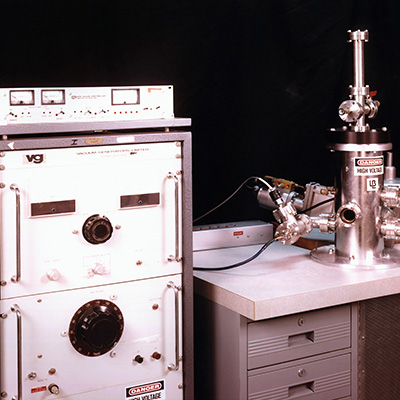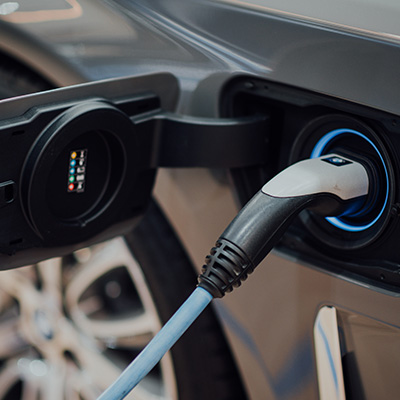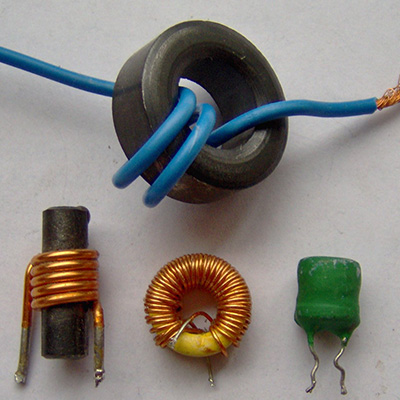Published On: Mar 27, 2018
INTRODUCTIONFor long time the main concern of consumers of electricity was the continuity of the supply, i.e. the reliability. Nowadays, with the increased usage of power electronic devices consumer not only demand reliability, but quality too. The equipment being applied in today’s industrial and commercial facilities are more sensitive to power quality disturbances than equipment applied in the past. In fast-changing market transformation with distributed generation, deregulation, renewable energy integration, electric vehicle, etc. a higher value will be put on power quality than we already do today. The investment required to reach a certain PQ level can vary considerably as it depends on the state and structure of the distribution system. As the Indian distribution infra is quite old, its reliability and ability to deliver quality power will be under scanner. Indian power utilities will have to strive to improve their quality of service be it continuity of supply, voltage quality or commercial quality and as it is perceived that quality of service tend to improve by investing in it. If there will be lack of investment in PQ today, there will be deterioration in the quality of supply tomorrow. PQ if not taken seriously can affect the Smart Grid Paradigm of today and show up in the longer-term effect such as breakdown of equipment, overheating and financial losses as mentioned in our earlier blog ‘Economic Impact and Losses due to poor Power Quality’ Investment in Power Quality is a proactive initiative and the initial investment will be minuscule compared to the long-term benefits or the money spent in a recovery caused due to PQ issues. The implications of PQ issues hamper the power sector techno-economically causing stress to customers and power utilities and we surely don’t want to see our future grid stumbling down due to this! India has an already established need to invest in PQ equipment as it is in the process of a major electrical infrastructure upgrade and making hefty investments in renewable energy, high speed mass transportation systems & smart grid that shall cause rise in several PQ issues. Further, as it is rightly stated ‘as you sow, so shall you reap’ we should aim to sow the seeds of good PQ by investing our time, money and intelligence today to reap enhanced power quality supply tomorrow. This blog sheds light on the global scenario of power quality market and trends that are driving these PQ investments. GLOBAL SCENARIO OF POWER QUALITY MARKETWith the growth in adoption of advanced technologies, world-wide power quality equipment market is valued at USD 29.74 billion in 2017 and is anticipated to grow at a CAGR of 6.56%, from 2017 to 2022. The North American market is expected to dominate the global Power Quality Equipment Market. The major factors driving power quality equipment market are the growing demand for protection systems for electronic devices, non-uniform power quality & network reliability issues, rise in alternative energy programs and power quality standardization. Emerging economies are expected to create better opportunities for the power quality equipment market. Geographically, power quality equipment market is expected to grow faster in the Asia-Pacific region, especially in China and India. India, China, and Singapore are some of the potential growing markets in the power and utilities sector due to increased investments in modernizing infrastructure and urbanizing populations. “Power Quality equipment market is valued at USD 29.74 billion in 2017 and is anticipated to grow at a CAGR of 6.56%, from 2017 to 2022”In India, under budgeted support for schemes like ‘National Smart Grid Mission’, ‘Integrated Power Development Schemes’ there will be a rise in investments in smart grid technologies and smart cities that include distribution grid automation, smart meters, and demand response systems thereby creating opportunities for the power quality equipment market. Some of the top players in the PQ equipment market are ABB Ltd., Siemens AG, Schneider Electric SE, Emerson Electric Company (now Vertiv), Eaton Corporation Plc, and General Electric Company. These leading players are trying to make inroads in the markets in developing economies and are adopting various strategies to increase their market shares. From the equipment segment, the Uninterruptable Power Supply (UPS) is expected to comprise the largest market by 2022. UPS is an electricity storage system that is used to reduce or avoid, negative effects and costs associated with electrical service outages and/or poor power quality. During outages, the stored energy is used to maintain power to specific end-user’s electricity using electrical and electronics equipment. It provides stable and reliable power to serve sensitive loads such as emergency lighting and medical equipment, reduce or avoid lost productivity, production damage, avoid product or facilities damage, and reduce or avoid electricity using equipment damage. Due to its application at various end-user points, demand for UPS is the highest among all types of power quality equipment and the segment is expected to dominate the market by 2022. Further, the global PQ market ecosystem starts with the manufacturer of basic components, such as copper and aluminium. |
 |
The manufactured parts are then assembled by the OEM to form variety of power quality equipment, which are then tested. This is followed by the distribution stage, following which, the product is provided to the end-users. Thus, for upward growth in PQ market it will also require investment in the raw materials apart from the investment in the PQ equipment.
SECTOR-WISE TREND IN POWER QUALITY MARKET
Growing non-linear loads be it in industrial, commercial or power utilities, they will be faced with PQ issues and mitigating them will be a challenge for these sectors unless required PQ mitigation devices are made available. Let us take a sneak peek into power quality market trend in different sectors like industrial, commercial and power utilities.
Industrial sector: The power quality market in the industrial segment will grow moderately in the upcoming years. The major factors contributing to the growth of the industrial sector are increasing investments and demand from the developing countries. In India, several development programs like ‘Make in India’ have led to the growth of the industrial sector in the past few years, and this is expected to continue. Power being input raw material for many of these industries, the quality of power shall be on high demand in coming days.
There is an increase in mobile phone manufacturing, electronic products manufacturing, and other manufacturing units. In manufacturing units, PQ equipment like PQ meters aid in analysing the input and identifying the noises, sags, transients, and other PQ anomalies. They also trigger alarms if these rise above the pre-set threshold values because such an increase may disrupt the production process or lead to deficiencies in the final products.
Commercial Sector: The commercial sector will be another key sector for PQ market as it requires clean and fail-safe power with lowest downtime. It is predicted to witness the highest CAGR among all the end-users of power quality equipment. Offices, malls, hotels, and other commercial facility use systems such as computing devices, HVAC units, and other electronic devices. These devices and systems are highly vulnerable and sensitive to power fluctuations. Distortions in power supply can even bring the entire functioning of the office or the hotel to a standstill causing financial losses for the company. To prevent such issues and to ensure that all computing and electronic devices work efficiently, power quality meters will be used in the commercial sector.
“Utility will be the fastest-growing end user of PQ equipment due to the ongoing investments made in developing transmission and distribution lines”
Utility Sector: The need for energy is increasing owing to surging demand of the ever-increasing population, rapid urbanization, and commercial and industrial development. Owing to the increase in economic growth and constantly changing technology, people have become accustomed to the use of electrical gadgets and devices in day-to-day life.
This has led to an increased consumption of electricity. Customers today talk about quality of power than just supply of power! Apart from this, the increasing number of commercial buildings and industries need huge amounts of electricity. With the depletion of non-renewable energy sources such as coal and oil and in support of sustainability action for mitigating climate change, many consumers are shifting to renewable power sources. The grid-integration with renewable will require higher level of protection devices and PQ mitigation equipment that help in suppressing the PQ issues. Hence, utility will be the fastest-growing end user of PQ equipment due to the ongoing investments made in developing transmission and distribution lines.
Overall, there is rise in usage of sensitive digital equipment used for automation, protection and control, protecting these for fail safe operations must be priority of distribution companies. They need to take up role of a doctor to cure the network and fight against the PQ anomalies, thereby keeping the network healthy for end-user and for themselves too.
CONCLUSION
To summarize, strong retrofit opportunities like smart grid, distribution automation will be key drivers for growth in power quality market in India. Upgrading power quality comes hand in hand with the updating technology. In India, the market today seems to be growing but it still has reluctance due to poor knowledge about the Power Quality. The PQ market ecosystem will have to be built to enhance reliability of the network by all the stakeholders. Thus, what clearly emerges from the global scenario is that, in order to increment the PQ level, right investments are to be sustained by distribution companies. Lack of investment in PQ today will only result in manifold investment tomorrow. Hence, it is necessary to understand the importance of investing in power quality at the earliest and pursue the policy towards effective implementation.
REFERENCES
- Electric Power Distribution Automation Systems Market Worth $23.7 Billion By 2025, report by Grand View Research, February 2017
- Power Quality Equipment Market worth 40.85 Billion USD by 2022, by Markets and Markets
- Distribution network investments to improve power quality by Fabrizio PILO Giuditta PISANO Gian Giuseppe SOMA, Itlay, Vienna, 21-24 May 2007, CIRED
- Distribution Automation Market (By Product Type – Monitoring and Control Devices, Power Quality and Efficiency Devices, and Switching and Power Reliability Devices; By End-user – Industrial, Commercial and Residential Sector) – Global Industry Analysis, Size, Share, Growth, Trends and Forecast 2013 – 2019 by Transparency Market Research
- Global Power Quality Meter Market – Growth Analysis and Forecast by Technavio







